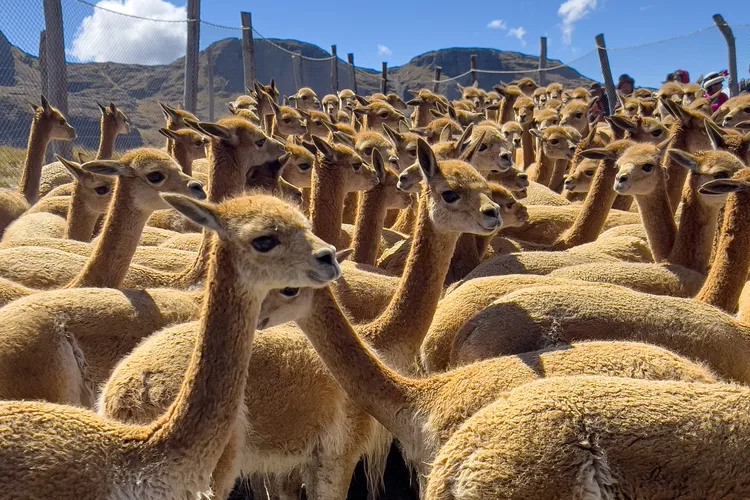How an Ancestral Peruvian Ceremony Is Saving the Once-Endangered Vicuña
Each year in the first weeks of June, Indigenous communities in the Andes form a human chain to corral the camelids and shear their valuable wool
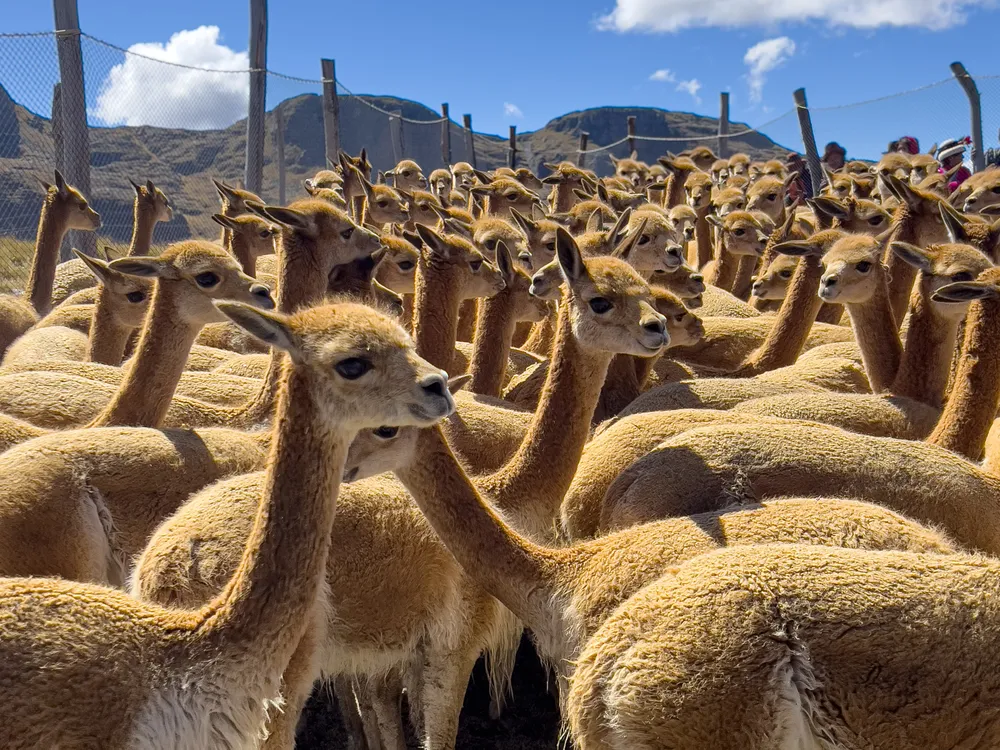
“They’ll be somewhere over there,” Elizabet Serrano Soria tells me, gesturing over the mountain. “Spread out beyond the hill.”
Serrano Soria and I are walking the long dirt road into a community-managed reserve near the rural town of Colca in the Apurímac Department of south-central Peru. At 14,500 feet, the air is thin and cold, still warming in the emerging day. Around us stretches a muted landscape of bunchgrass and sedges, rolling to meet the rocky outcroppings of the Andes.
This high puna ecosystem, characterized by its harsh climate and sparse vegetation, is the natural territory of Peru’s national animal, the vicuña—a shy, elusive camelid renowned for having the world’s most luxurious wool.
“And there come the villagers,” Serrano Soria says.
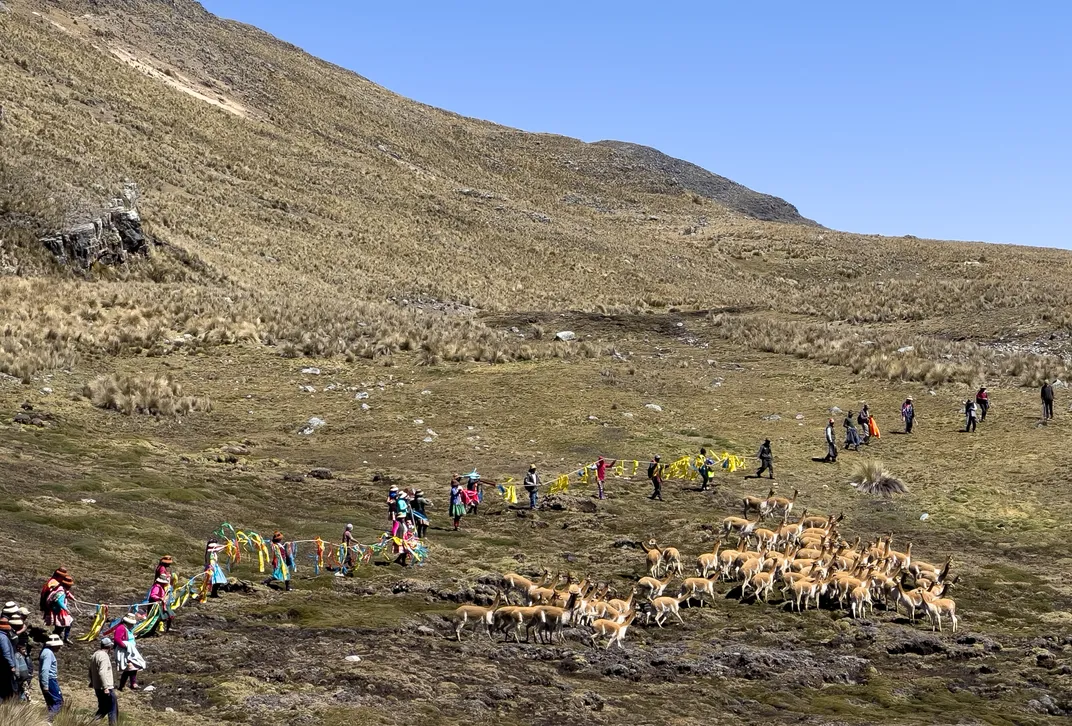
A cargo truck jostles down the road behind us, its bed packed with brightly dressed villagers calling out greetings as they pass. More trucks follow, as do motorcycles and horses, children wedged between parents.
The transports unload at the center of the reserve. Passengers pass down bundles of food and buckets of chicha—a fermented corn beer. The roughly 300 villagers gather in a circle, waiting.
We’ve arrived for the chaccu, an annual celebration rooted in pre-Inca tradition in which the community will herd the wild vicuñas across the mountains to then shear their precious fiber.
Soon the quiet landscape will be transformed, flashes of color and animated shouts in Quechua erupting alongside the galloping animals, all in an event that has helped save the vicuña from the brink of extinction.
The smallest of the camelid family, vicuñas are native to the high Andes of Peru, Bolivia, Chile and Argentina, where they have adapted to their habitat above 10,500 feet. Their large lungs pull oxygen from the thin air, and their leathery foot pads grip without damaging the fragile grasslands. Their greatest adaptation, however—and the motive for both their reverence and destruction—is the quality of their fur.
At 12 microns in diameter, vicuña fiber is finer than cashmere. Their cinnamon-brown pelts insulate tremendously while remaining lightweight and soft. Raw vicuña fiber can fetch upwards of $270 per pound.
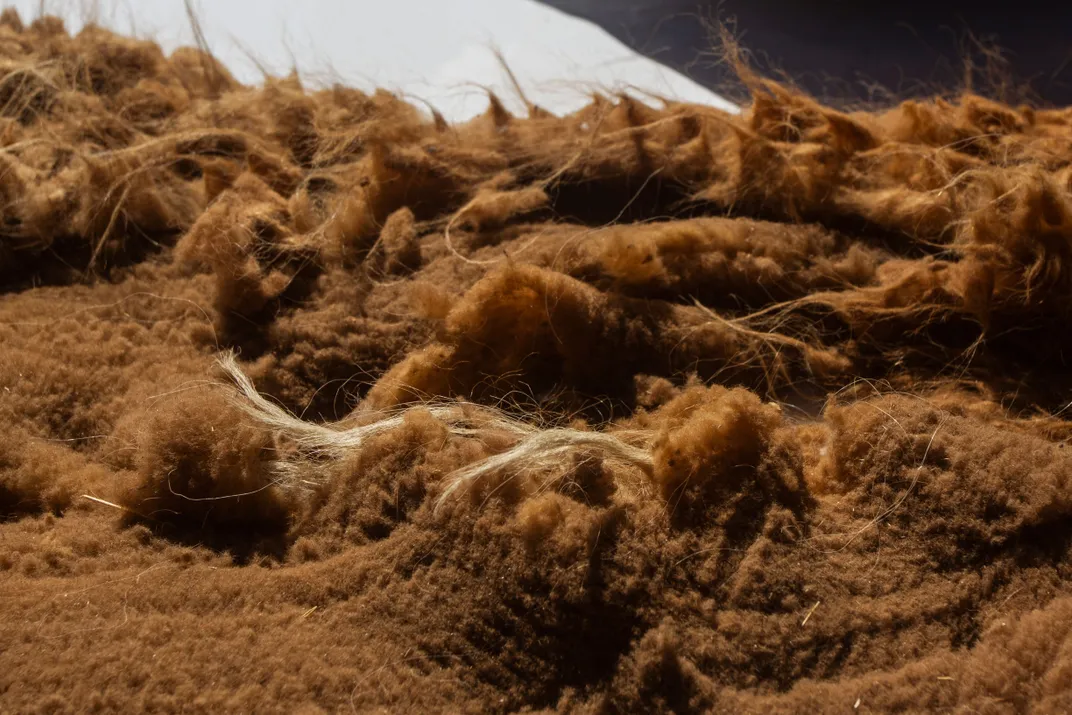
The vicuña’s graceful nature and high-altitude habitat imbued it with significance for many Andean cultures. “Our ancestors see the vicuña as a sacred animal protected by the apus,” or mountain spirits, says Edison Durán García, a schoolteacher in Colca.
The Inca institutionalized this sacred status; killing a vicuña was forbidden, and only nobility could wear its wool.
In order to harvest the fiber, the Inca adopted the live-shearing chaccu practiced by prior Andean societies.
“The vicuñas were property of the Inca, who regulated the capture activities in the core of the empire,” writes Argentine zooarchaeologist Hugo Yacobaccio in a chapter of The Vicuña: The Theory and Practice of Community-Based Wildlife Management. The chaccu—held approximately once every four years during the Inca Empire, from around 1470 to 1535—saw thousands gathered in the state-organized event to form human chains across the Andes, driving the animals in a tradition rich with ceremony.
With the arrival of the Spanish, however, this sacred vision of the vicuña was lost. Colonists began to hunt the animals with impunity for their meat and hides.
By the numbers: Vicuña population
- Vicuñas once numbered in the millions across the Andes. With poachers targeting the animal for its valuable fur, the population dropped to 6,000 by the mid-1960s.
- Today, the vicuña population sits at more than 200,000, thanks to the revival of the chaccu.
The vicuña’s fate only worsened as global trade networks discovered the “Andean gold” of their fiber. Europe’s luxury market blossomed throughout the 19th century with an unchecked demand for the material, and as its availability waned its value pushed higher.
With black-market prices soaring to roughly $450 per pound in the early 21st century, poachers devastated the species.
By the mid-1960s, the vicuña population—once numbering millions across the Andes—had fallen to as low as 6,000.
“The chaccu is from our ancestors, from our grandfathers,” says Vicente López Cornejo, the former president of Colca, whom I speak with at the event. Colca, he says, “is an original community, from before the Spanish.”
The first to set off in the herding are those on horseback and the younger participants—their job is the toughest, as they’ll need to traverse the majority of the reserve’s perimeter to drive the vicuñas inward.
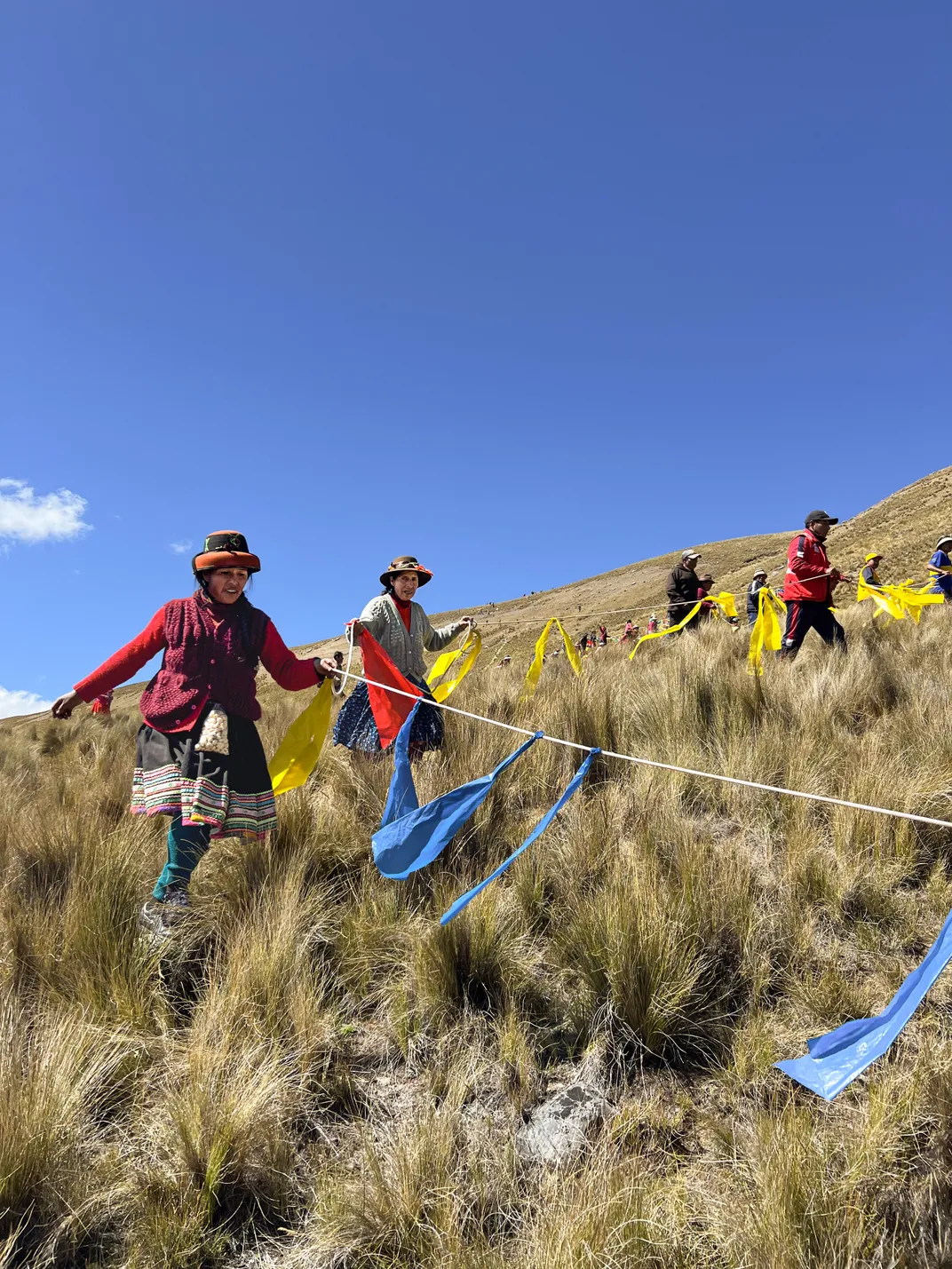
Serrano Soria tells me that she’s been the leader of the first group for the last three chaccus. I met her last year at a race in Ecuador; an accomplished trail runner, she is often elected to head the most arduous group.
This year, though, we stay toward the back of the crowd. The strategy is for four groups to spread across one edge of the reserve, effectively cutting off a large chunk of the terrain. With the first group closing in from the opposite side, we will then move in tandem to drive the animals into one corner of the fence line.
As we wait for a signal, women spread out blankets and set up food. Bags of coca leaves—a sacred plant in Andean culture—are passed around in the strengthening sun.
Soon, a call comes from across the puna. The vicuñas are moving. We spread out into a line, holding our rope, roughly 80 feet long with colorful flags tied at intervals. Over the hillside, the first three vicuñas come bounding down. At the sight of them, the villagers around me spring to action, shouting in Quechua and waving the rope aggressively.
“You have to shout!” Serrano Soria tells me. “Get the stress out. Everyone shouts!”
The vicuñas, seemingly baffled, bound off in our desired direction.
In this way, we drive small groups of the animals, following instructions shouted from someone overseeing the movement. We step forward on command, then wait in tense anticipation as other distantly seen lines—flashes of bright clothing, neon-yellow flags waving—reposition. Step by step, the corral tightens.
Finally, from above, comes a shout: “The gran tropa!” (Translation: the main herd.) Far ahead, we watch as a mass of roughly 80 vicuñas are corralled down the hill, the lead group waving their rope and shouting behind them.
The tension breaks. “Advance!” someone yells, and we take off running.
In a cloud of color and sound, everyone sprints forward as the vicuñas gallop in our direction. Fearing the waving rope and the guttural yells, the animals turn back, and for a few moments we chase them, hurdling trickling streams and stumbling over the rough shrub grasses. The circle contracts, our stretch of rope joining with the others, while men on horseback thunder from over the hill. It’s a mass of flowing skirts and waving hats, thundering feet, indecipherable shouts of humans and animals. One side of the woven corral is opened, and the vicuñas, about 170 in total, thunder in.
In the 1960s, amid an international wave of conservation concern and critical population estimates falling into the thousands, researchers and biologists sounded the alarm on the impending collapse of the vicuña from black-market wool hunters. Government forces intervened, implementing a total ban on hunting and wool trade.
Covering roughly 16,000 acres, Pampa Galeras Bárbara D’Achille National Reserve became the nucleus of the conservation effort. Founded in 1967 at the site of one of the largest remaining herds, the reserve was staffed with armed guards, wildlife biologists and park rangers dedicated to the animal’s resurgence. International nongovernmental organizations and researchers stepped in, and with increased protection from poachers, the vicuñas naturally began to rebound. Census data shows that the reserve’s population had grown from approximately 1,000 to over 4,000 by as early as 1970.
Researchers then considered the economic implications. Was there any ethical way, they wondered, to access the natural resource of the fur without putting the animals at risk?
For their solution, they turned to an ancient practice—the chaccu.
Early experimental chaccus at Pampa Galeras proved successful, demonstrating that populations could thrive alongside nonlethal shearing.
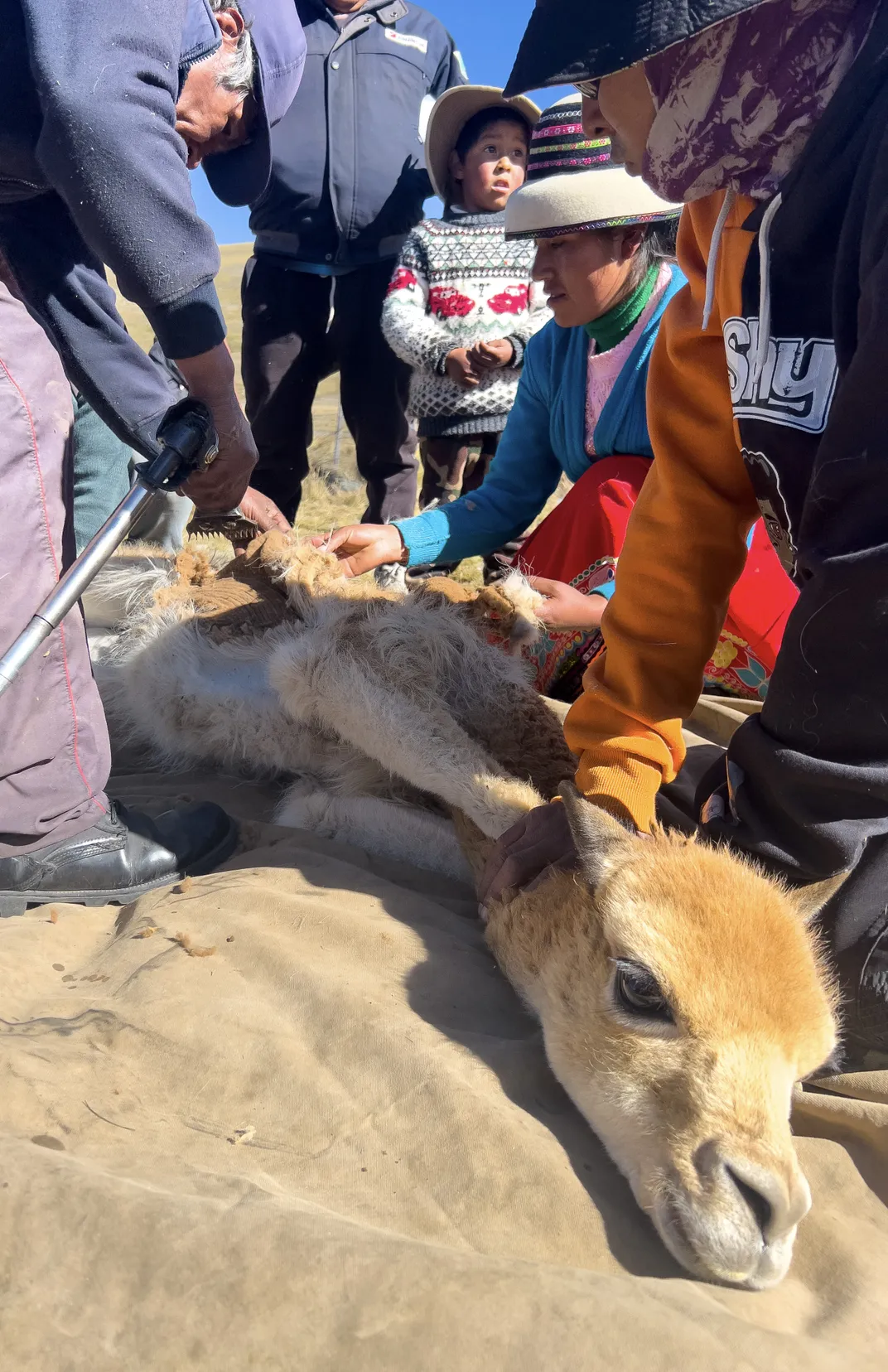
While safe from poaching, the vicuña could not, however, escape the political violence that came to grip Peru.
The Shining Path guerrilla group arose in the 1970s as a response in part to the deep inequality affecting rural Andean populations. Following Maoist doctrine, the Shining Path pursued a total overthrow, waging a “people’s war” against any institution, individual or community thought to support government control or seen as insufficiently revolutionary. State-supported Pampa Galeras was targeted; in 1983, guerrillas attacked the park. Two years later, they brutally murdered environmental journalist Bárbara D’Achille. Amid the chaos, the chaccus were paused, poachers returned, and vicuña numbers again suffered.
According to an official case study by CITES, the international treaty regulating trade in endangered species, “The lack of surveillance in the countryside allowed at least 50,000 vicuñas to fall victim to poaching between 1983 and 1994.”
While the Shining Path claimed to fight for Andean communities, in practice both it and the government forces sent to suppress it terrorized any village or person thought to be in opposition. The 20 years of internal conflict were marked by horrific human rights abuses by both sides; victims were overwhelmingly rural, poor and Quechua-speaking.
After the conflict, the work at Pampa Galeras (now officially bearing Bárbara D’Achille’s name) became even more critical. While the chaccu was restoring an important Andean tradition, the project also offered an avenue for rural economic development alongside conservation.
As vicuña populations stabilized, Pampa Galeras spread its model across Peru. With support from a range of international organizations, the government established reserves throughout the country, and funds went toward training and maintenance. Seed populations from Pampa Galeras were then sent to repopulate. The reserve in Colca was born of this effort; in 2011, 214 vicuñas were brought from Pampa Galeras, according to Durán García.
In 1995, Law No. 26496 reopened the regulated sale of vicuña fiber, with one key provision—use and profit rights of the fiber were granted to the rural communities that steward the animals. Through this model of community-based conservation, Peru’s vicuña population has grown to over 200,000, and many Quechua-speaking communities are reaping the economic benefits.
When the dust has settled, we sit to eat. People pull potatoes and cheese from cloth bundles and pass around plates of alpaca—the vicuña’s larger, more edible cousin.
Juan Yanapa Quispe, the lead veterinarian of the chaccu, tells me that the event is also critical for maintaining the health of the vicuñas. He and his team lay out their supplies on a blanket with carefully arranged coca leaves. Each technician takes a glass of liquor, and, speaking in Quechua, pours some on the ground before drinking. This, Serrano Soria explains to me, is an offering to Pachamama, or mother earth.
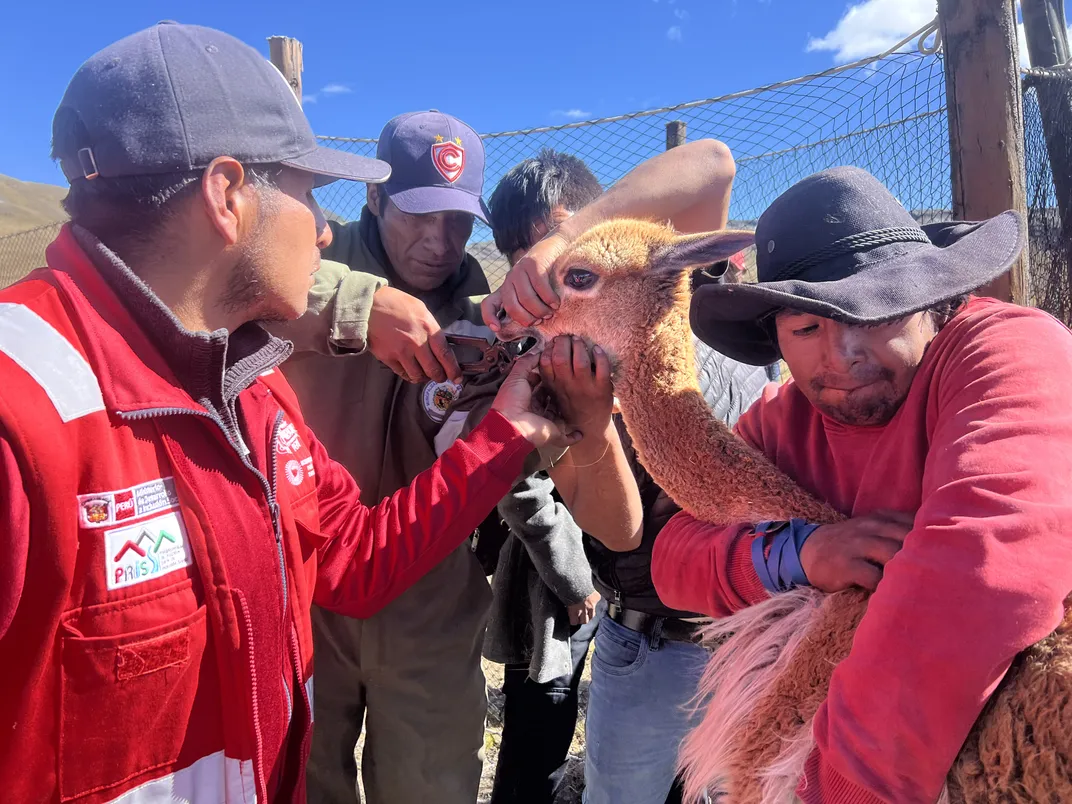
“We will treat the vicuñas against fasciola, mites and worms,” Yanapa Quispe explains, “and we’ll cut their bottom teeth slightly, because when they’re too large they can’t eat properly.”
I watch as two men enter the corral and grab vicuñas one by one, lifting them in the air as they receive their shots. The animals look bewildered as a veterinarian, holding a tool resembling an oversized set of pliers, approaches their teeth.
Volunteers then harvest the wool quickly. They hold each animal down on a blanket and pass electric shears over its fur. Women then separate the wool, bagging it for sale.
Because of strict regulations, a regional association manages the harvested fibers, transporting the wool to Lima for sale. Durán García tells me that some years a chaccu can raise as much as $10,000 for the community; these funds pay the reserve’s guard and help fund public works, such as the elementary school.
With a single vicuña fiber jacket retailing for more than $20,000, however, many in the community hope to increase their earnings. Manufacturing goods is one potential avenue, and tourism another. Yanapa Quispe points to the original vicuña reserve at Pampa Galeras, where each year roughly 700 to 1,000 visitors from Peru and abroad attend the chaccu.
“If we promoted ours well, we could have visitors coming to take pictures with the vicuñas,” he says.
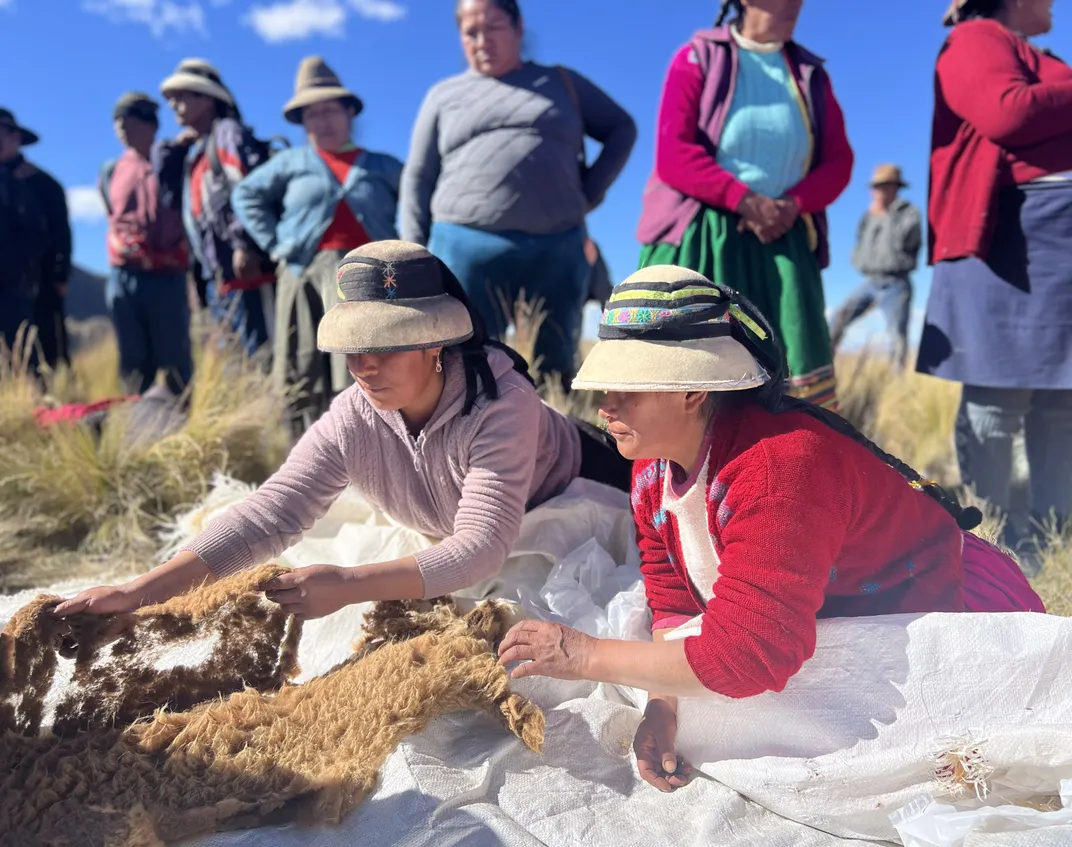
After shearing, the animals are set free away from the crowd. Thinner now, they step to their feet and bound lightly over the puna, disappearing from view.
When the last of the animals has been shorn and released, Serrano Soria and I walk the dirt road to the reserve’s gate. We’re tired, our voices hoarse and legs sore, but happy—me to have witnessed the event, and Serrano Soria, I think, to witness its revival.
Her family and friends, she says, are proud of their culture, which is why she invited me to join.
“Many people in Peru have lost their culture,” she tells me. “But these are our traditions, our history. Our past can’t be taken away.”
With the chaccu, the traditions of the past are paving the way forward for community and ecology alike.
Planning Your Next Trip?
Explore great travel deals
A Note to our Readers Smithsonian magazine participates in affiliate link advertising programs. If you purchase an item through these links, we receive a commission.
